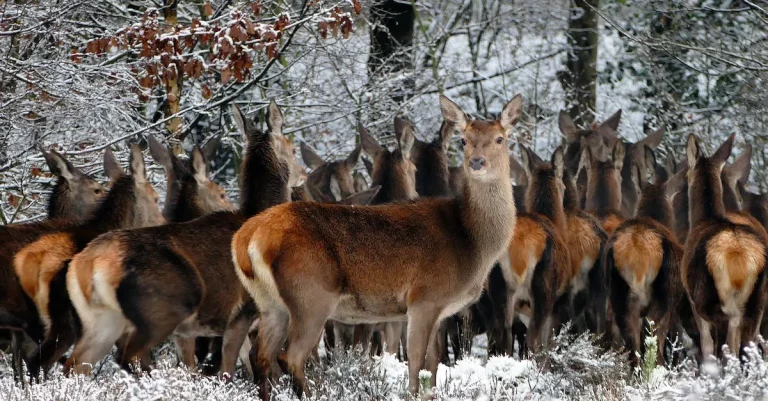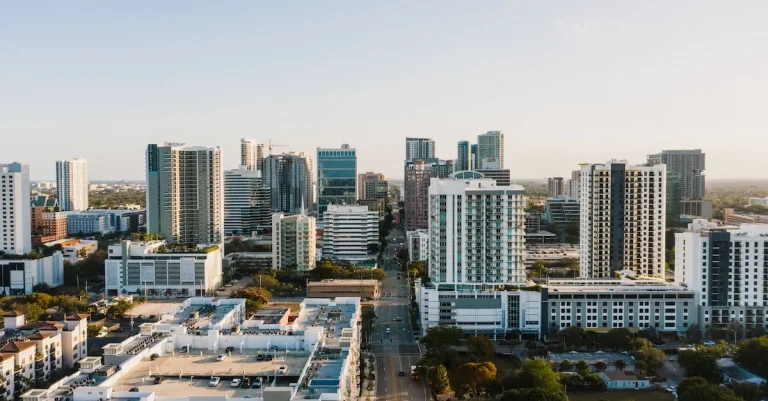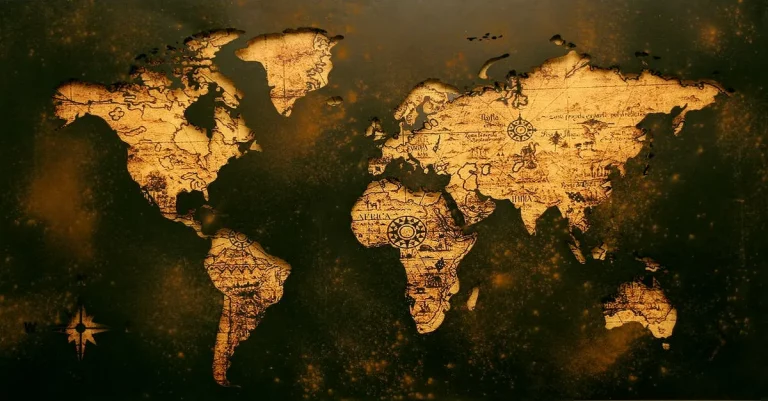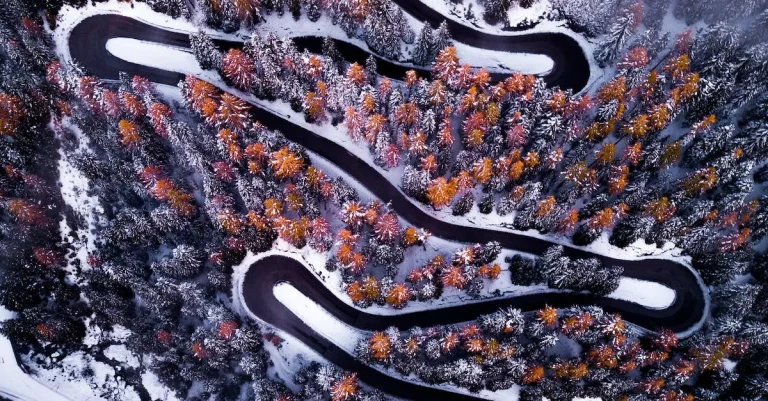Is Florida A Swamp?
With its extensive wetlands, Spanish moss, and muggy climate, Florida is often stereotyped as one big swamp. But does this reputation accurately reflect the state’s diverse landscapes and ecosystems?
If you’re short on time, here’s a quick answer to your question: While parts of Florida contain swampy areas, the state as a whole cannot be characterized as a swamp. Florida has a variety of terrestrial and aquatic environments, from sandy beaches to pine forests to the Everglades wetlands.
Defining What Makes a Swamp
When discussing whether Florida is a swamp, it is important to understand what exactly constitutes a swamp. Swamps are a type of wetland characterized by three main factors: standing water, hydric soils, and wetland vegetation.
Standing Water
One of the defining features of a swamp is the presence of standing water. This water can be either freshwater or saltwater, depending on the location. In Florida, swamps are typically found in low-lying areas that receive ample rainfall or are connected to bodies of water such as rivers or lakes.
These areas can experience periodic flooding, resulting in the formation of swamps.
Hydric Soils
Hydric soils are another important component of a swamp. These soils are characterized by being waterlogged for long periods of time, leading to low levels of oxygen. They are typically rich in organic matter and have a distinct dark color.
In Florida, the state’s flat topography and high water table contribute to the formation of hydric soils, which are essential for the existence of swamps.
Wetland Vegetation
Finally, wetland vegetation plays a crucial role in defining a swamp. It consists of a diverse range of plant species that are adapted to thrive in waterlogged conditions. Common examples of wetland vegetation found in Florida swamps include cypress trees, mangroves, and various types of aquatic plants.
These plants not only provide habitat for a variety of wildlife but also help to filter and purify water, making swamps important ecosystems in Florida.
According to the United States Environmental Protection Agency (EPA), swamps are classified as one of the four main types of wetlands, along with marshes, bogs, and fens. They are considered valuable natural resources due to their ecological functions, including flood control, water purification, and habitat provision.
So, while Florida is often associated with swamps due to its unique geography and climate, it is important to note that not all areas in the state can be classified as swamps. However, the presence of standing water, hydric soils, and wetland vegetation in many parts of Florida contribute to its reputation as a “swampy” state.
Florida’s Diverse Ecosystems and Geography
Florida is a state known for its diverse ecosystems and unique geography. From its beautiful beaches and barrier islands to its lush upland forests, Florida offers a wide range of natural environments for both residents and tourists to explore.
Beaches and Barrier Islands
One of Florida’s most iconic features is its stunning coastline, which stretches for hundreds of miles. The state is home to numerous beaches and barrier islands that attract visitors from all over the world.
These sandy shores not only provide a place for relaxation and recreation but also serve as important habitats for a variety of plant and animal species. The delicate balance between land and sea is evident in the diverse ecosystems found in these coastal areas.
Upland Forests
Contrary to popular belief, Florida is not just a flat, swampy landscape. In fact, the state is home to dense upland forests that cover a significant portion of its land area. These forests are characterized by towering trees, such as pines and oaks, and are teeming with wildlife.
They provide habitat for numerous species, including deer, bears, and various bird species. Exploring these forests can be a great way to connect with nature and appreciate Florida’s diverse geography.
Freshwater Springs
Florida is also famous for its freshwater springs, which are natural geological formations that produce clear, cool water. These springs are not only a sight to behold but also play a crucial role in maintaining the state’s water ecosystem.
They provide a source of clean water for both humans and wildlife and serve as important habitats for various aquatic species. Some popular springs for swimming and snorkeling include Weeki Wachee Springs and Ichetucknee Springs.
Coral Reefs
Off the coast of Florida lies a treasure trove of marine life – the coral reefs. These vibrant underwater ecosystems are home to a plethora of colorful fish, sea turtles, and other marine creatures. Florida’s coral reefs, such as the Florida Keys Reef Tract, are part of the larger Caribbean Coral Reefs, which are known for their biodiversity and ecological importance.
Snorkeling or diving in these reefs offers a unique opportunity to witness the beauty and fragility of these underwater habitats.
Significant Wetland Regions
Florida is renowned for its diverse and unique wetland regions, which play a crucial role in the state’s ecosystem. These wetlands provide habitat for a wide range of plant and animal species, help regulate water flow, and serve as natural buffers against storms and hurricanes.
Let’s explore some of the most significant wetland regions in Florida.
Everglades
The Everglades, often referred to as the “River of Grass,” is one of the most iconic wetland regions in Florida. Stretching over 1.5 million acres, it is the largest subtropical wilderness in the United States.
The Everglades is home to a diverse array of species, including the endangered Florida panther, American alligator, and numerous bird species like the roseate spoonbill and the great blue heron. Unfortunately, this unique ecosystem is facing significant challenges due to urban development, pollution, and invasive species.
Okefenokee Swamp
While not located in Florida, the Okefenokee Swamp is worth mentioning as it borders the state. Covering nearly 700 square miles, this vast wetland is mostly situated in Georgia but extends into Florida.
It is home to an incredible variety of plants and animals, including the iconic American black bear, red-cockaded woodpecker, and the rare eastern indigo snake. The Okefenokee Swamp is known for its picturesque beauty, with its pristine waterways and abundant wildlife attracting nature enthusiasts and photographers from around the world.
Big Cypress Swamp
The Big Cypress Swamp, located in South Florida, is another significant wetland region in the state. Covering approximately 729,000 acres, it forms a vital part of the Greater Everglades ecosystem. This unique swamp is home to the endangered Florida panther, the elusive Florida black bear, and the rare ghost orchid.
It is also a popular destination for outdoor enthusiasts who enjoy activities such as hiking, bird watching, and canoeing. The Big Cypress Swamp offers a chance to experience the beauty and tranquility of Florida’s natural landscapes.
These wetland regions are just a glimpse of Florida’s rich and diverse natural heritage. They remind us of the importance of preserving and protecting these valuable ecosystems for future generations. To learn more about these wetland regions and their conservation efforts, you can visit the websites of organizations like the Everglades Foundation and the Big Cypress National Preserve.
Misconceptions About Florida’s Landscape
Florida, often referred to as the “Sunshine State,” is known for its unique and diverse landscape. However, there are several misconceptions about this state’s geography that have led to the belief that Florida is nothing more than a swamp.
In reality, Florida’s landscape is much more varied and complex than the exaggerated stereotypes suggest.
Exaggerated Swamp Stereotypes
One of the most common misconceptions about Florida is that it is nothing but a vast swamp. While it is true that Florida has a significant amount of wetland areas, including the famous Everglades, it is important to note that these wetlands are not representative of the entire state.
In fact, only a small portion of Florida’s landmass is composed of wetlands. The rest of the state consists of upland areas, such as prairies, forests, and even sandy beaches.
The notion that Florida is a never-ending swamp is often fueled by popular culture and media portrayals. Movies and TV shows often depict the state as a haven for alligators and snakes, perpetuating the idea that Florida is a dangerous and uninhabitable swamp.
While it is true that Florida is home to a wide variety of wildlife, including alligators, it is also a place where people live, work, and enjoy a variety of recreational activities.
Ignoring Upland Areas
Another misconception about Florida’s landscape is the tendency to overlook its upland areas. Many people associate Florida solely with its coastal regions and fail to recognize the diverse ecosystems found further inland.
Florida is home to several state parks and preserves that showcase the state’s upland areas, including vast forests and rolling hills. These areas provide habitats for a wide range of plant and animal species and offer opportunities for hiking, camping, and wildlife observation.
By focusing solely on the wetlands, people miss out on the chance to appreciate the full breadth of Florida’s natural beauty. From the towering cypress trees in the Big Cypress National Preserve to the scenic trails of the Ocala National Forest, there is much more to Florida’s landscape than meets the eye.
Confusing Marsh for Swamp
Another source of confusion when it comes to Florida’s landscape is the misconception that marshes and swamps are the same thing. While both marshes and swamps are types of wetlands, they have distinct characteristics.
Marshes are typically characterized by the presence of grasses and sedges, while swamps are dominated by trees and woody vegetation.
Florida has both marshes and swamps, but the majority of its wetland areas are marshes. These marshes are often teeming with life, providing habitat for a wide range of birds, amphibians, and other wildlife.
Exploring these marshes can be a rewarding experience for nature enthusiasts, offering the chance to spot rare and unique species in their natural habitat.
Threats Facing Florida’s Delicate Ecosystems
Draining and Development
One of the major threats facing Florida’s delicate ecosystems is the extensive draining and development of its wetlands. Over the past century, vast areas of wetlands have been drained to make way for urban development and agriculture.
This has led to the destruction of crucial habitats for numerous plant and animal species, as well as the disruption of natural water flow patterns. The loss of wetlands has also resulted in reduced water filtration, increased flooding risks, and a decline in water quality.
Pollution
Pollution, particularly from agricultural runoff and urban activities, poses a significant threat to Florida’s ecosystems. Fertilizers, pesticides, and other chemicals used in agriculture can find their way into the state’s water bodies, causing harmful algal blooms and negatively impacting aquatic life.
Additionally, urban runoff containing pollutants such as oil, heavy metals, and trash can contaminate waterways and degrade the quality of the surrounding habitats. This pollution not only affects aquatic species but also poses risks to human health and impacts the tourism industry, which relies heavily on Florida’s pristine beaches and clear waters.
Climate Change
Climate change is another major threat to Florida’s delicate ecosystems. Rising global temperatures and sea levels have profound implications for the state’s coastal areas and unique ecosystems like the Everglades.
Sea-level rise can lead to saltwater intrusion into freshwater systems, threatening the survival of many plant and animal species that rely on a specific balance of salinity. Additionally, warmer temperatures can disrupt natural cycles, such as the timing of migrations and breeding seasons for wildlife.
Extreme weather events, including hurricanes, are also becoming more frequent and intense, causing further damage to Florida’s ecosystems.
According to a report by the National Oceanic and Atmospheric Administration (NOAA), Florida is one of the most vulnerable states to the impacts of climate change. The state’s low-lying coastal areas are at risk of increased flooding, erosion, and storm surge.
The report also highlights the potential loss of critical habitats, such as coral reefs, mangroves, and seagrass beds, which are essential for supporting biodiversity and protecting coastlines.
To address these threats, various conservation efforts are underway in Florida. Organizations such as the Florida Department of Environmental Protection and the Florida Fish and Wildlife Conservation Commission are working to protect and restore wetlands, reduce pollution, and develop strategies to mitigate the impacts of climate change.
It is crucial for individuals, businesses, and policymakers to support these initiatives and take steps to preserve Florida’s unique ecosystems for future generations.
Conclusion
While notable swamp regions like the Everglades represent important parts of Florida’s landscape, the state contains a diverse array of terrestrial, freshwater, and marine environments. Broad generalizations of Florida as just one big swamp fail to capture the true diversity of the state’s ecosystems.
In summary, Florida cannot accurately be labeled solely as a swamp, even if swampy wetlands make up portions of its lands. A closer look reveals a mosaic of habitats, from sandy beaches to pine woods to spring-fed rivers.








